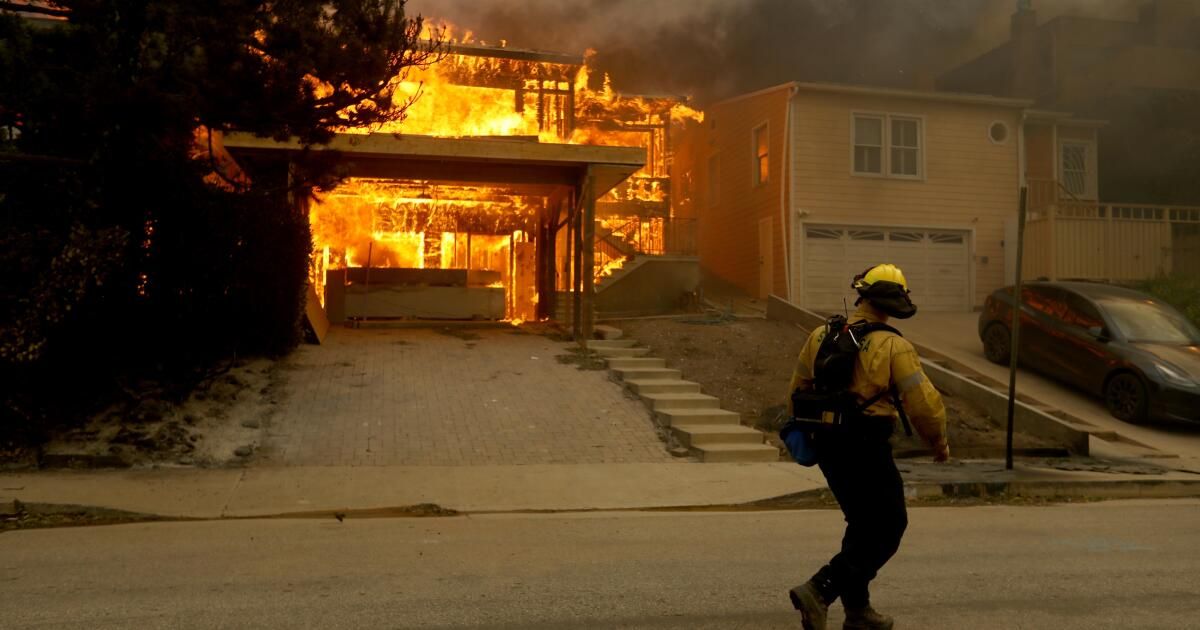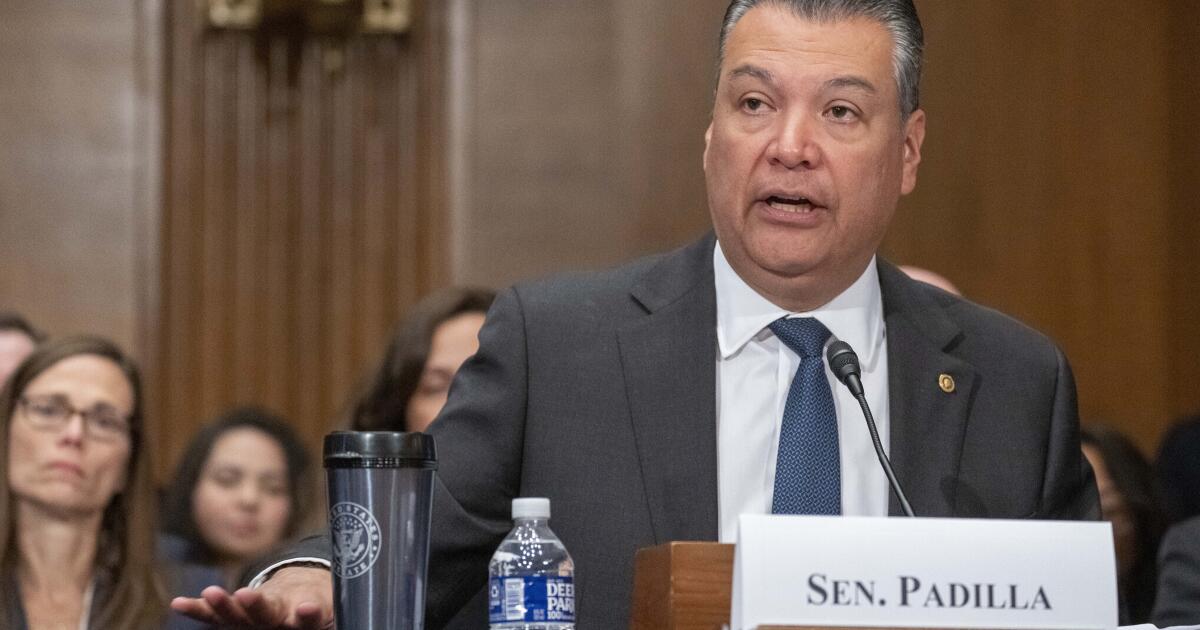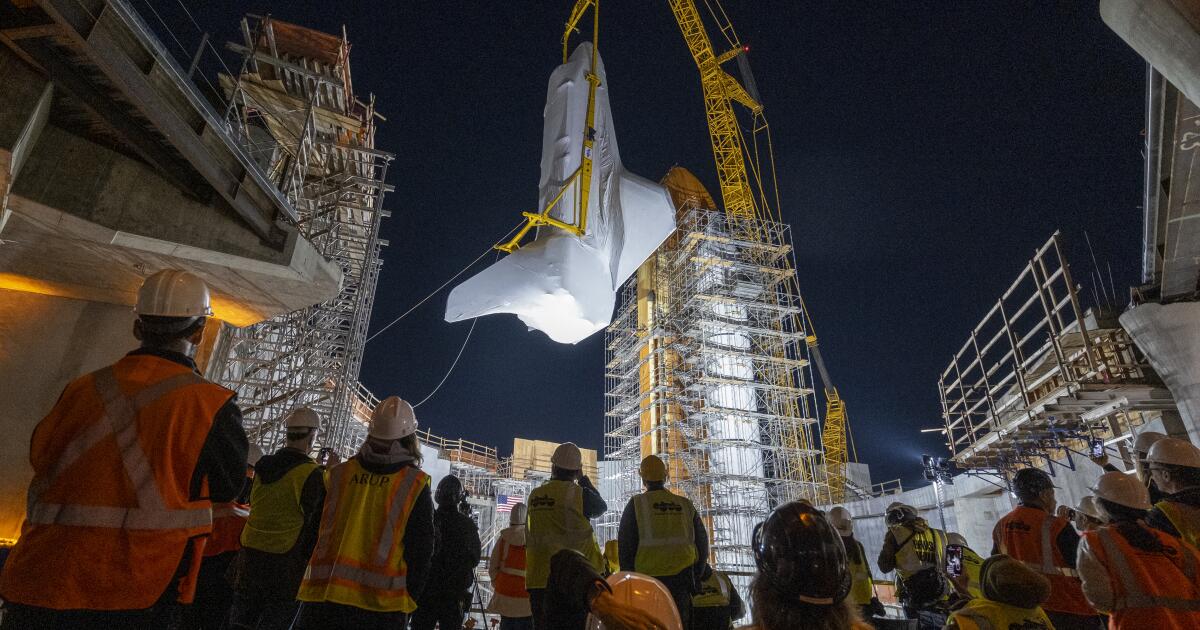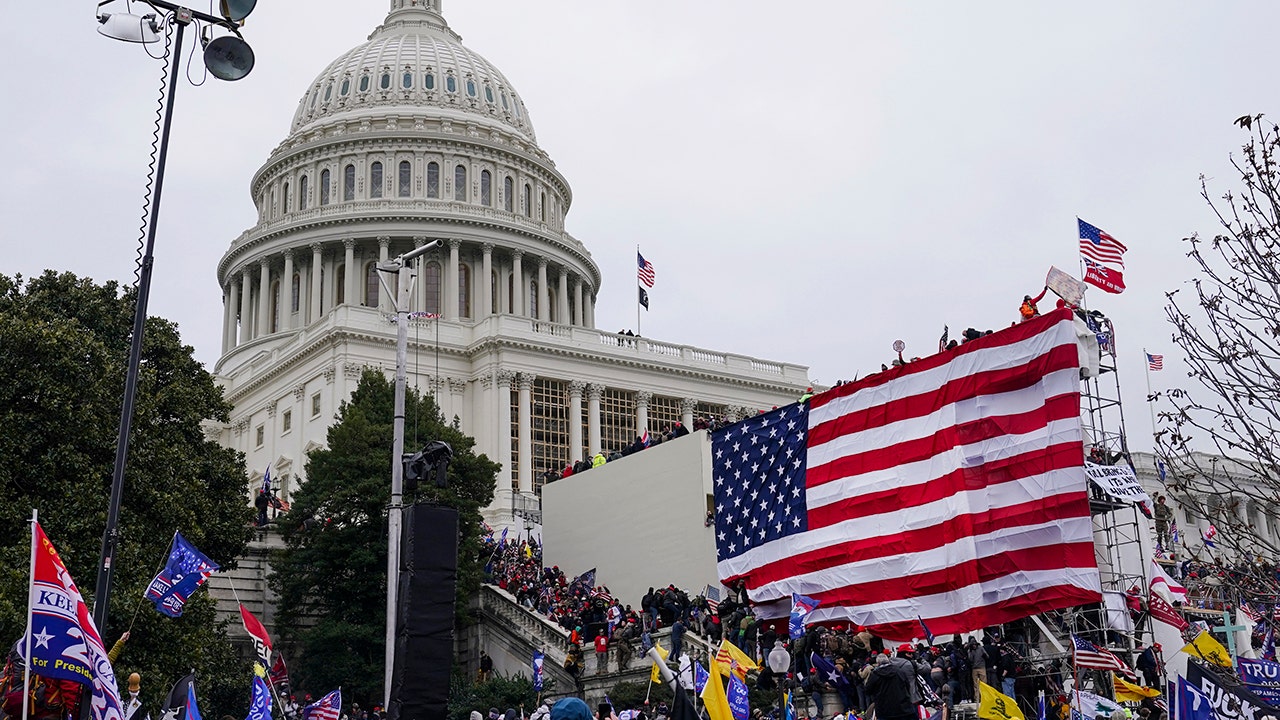California legislators are asking the State to accelerate the rules that some scientists and firefighters say that they may have helped mitigate the damage of the devastating forest fires of Los Angeles.
The idea is simple: keep the first 5 feet around a house without flammable vegetation, wooden fences and debris, owners can reduce the risk of gritters to light their property, and, with that, the possibilities of an urban conflagration, in which the extended flames of structure to structure.
The California Legislature in 2020 approved a bill that requires that the owners in the areas prone to fire maintain the so -called areas resistant to the panels around their homes. The legislation commissioned the Board for Forestry and Fire Protection by writing rules that govern exactly how this should be for January 1, 2023. But the Board has not yet done so, and does not yet have a firm timeline for when I will be finished.
When asked why the elaboration of rules is more than two years of programming, the executive officer of the Board Edith Hannigan responded with a statement that says that the agency is still in the “phase of prior creation of the rule” of the Development of standards and focuses on finding options for financial and education financial to help people meet them.
“There are many facets to consider as part of this complex process,” he said.
State Senator Ben Allen (D-Santa Monica), which represents Malibu and Palisades del Pacíf that the standards be in place as home owners.
“I am frustrated that these regulations have not yet left the Forestry Board,” said Allen, who presides over the subcommittee that approves the Board budget. “After seeing my community burn, I want to see them take action.”
Senator Henry Stern (D-Calabasas) is also asking the Board to move faster.
“We cannot afford to kick the can along the way,” he said in a statement, qualifying the rules as a matter of life and death for the owners and their neighbors. “While we press to rebuild the Southland, we must also ensure that our communities that still stop around California will not be the next.”
In the fires of Palisades and Eaton, the brush is burned in the middle of fierce winds of Santa Ana threw coals that lit houses. The flames extend along the hedges of privacy and the fences to the neighboring properties, overwhelming fire fighting resources, according to a preliminary report of the Institute of Insurance for Business and Home Safety.
The objective of a area resistant to the Emperina, also known as Zero Zone, is to separate the connections between the properties to reduce the risk of such propagation, multiple experts said. These precautions also decrease the possibilities that a home turns on when depriving the coals of material so that they burn against a structure, they said.
“We definitely know for our research and analysis after the defense space that the zero zone is the most critical,” said Steve Hawks, senior director of the Wildfire Institute.
The fires took place during a climate so extreme that even if an owner took all the appropriate precautions, the winds could have helped the embers to turn on a neighboring structure and then spread, said the head of the forest division of the County Fire Department From Los Angeles, Ron Durbin. At the same time, he said, having 5 feet areas resistant to the pairing around the houses “would still have made the difference, if everyone had done well.”
The representative Laura Friedman (D-Glendale) introduced the legislation of the zero zone when she served in the State Assembly, after a series of destructive fires in 2017 and 2018 that highlighted the need to be more proactive to prepare for such conflagrations, she said .
“I would say that the time has passed since these regulations are written and pushed into the public,” said Friedman.
Once written, the standards will apply to both new constructions and to the existing homes in areas designated by the State to have a high risk of forest fires. These areas can soon change, since the legislation approved in 2021 required that the California firefighter expand the gravity mapping of the danger of fire in areas of the State where local governments are responsible for the suppression of fires.
These maps will be based on an updated forest fire danger model that takes into account the new science that informs local climatic data and improved predictions of how fires are propagated and how and where the Embers travel, said the fire chief of firefighters from California, Daniel Berlant.
That will probably result in more areas to be characterized as fire prone, especially dense communities near wild land areas, such as Altadena, whose parts were razed by Eaton's fire, Durbin said.
The new maps, which are expected to be sent to the affected cities for adoption this month, could result in the requirements of more homes that comply with the authorization programs of existing brushes and the pending regulations of the zero zone, as well as, as well as, as well as, as well as, as well as, as well as, as well as, as well as, as well as, as well as, as well as, as well as, For the new construction, the State Fire Fire Building.
Some may find that onerous: although the Zone Zero bill did not face a formal organized opposition, several legislators remember to have received a ear of the owners concerned about the cost or aesthetics of eliminating plants and fences from their homes.
“Certainly, there are people who will say that it is not the responsibility of the State to tell private owners what they should do with their land, full stop,” Friedman said. “But if you live in a community that is in a high fire zone, we have to realize that a property that is obviously insecure can put a complete neighborhood at risk.”
Bill Dodd, a retired state democratic senator who represented fire -prone areas, including Napa County and part of Sonoma County, said many owners resisted the regulations of the zero zone .
“Even after the fires in Napa, we had people who said: 'I never took out my trees,” he said.
Before leaving the Senate last year, Dodd wrote successful legislation that gave the owners three years to comply with any rule of the zero zone, saying that he was concerned about the costs for rural owners. That three -year access is to apply only to those who need to modernize their property, not to the new construction.
Friedman, however, said that the rules could save money to long -term owners encouraging insurance companies to continue writing policies that cover homes in fire -prone areas. And both she and Allen pointed out that the cost of fulfilling is overcome by the losing home of one to shoot.
“After losing their homes, being evacuated from their homes, seeing friends losing houses, people don't want to play,” said Allen. “I think there is an appetite for a more serious regulation when it comes to ensuring that our communities are better prepared for catastrophic forest fires.”
The staff of the Forest Board aims to have a draft of the proposal of the rules “as soon as it is feasible,” said Hannigan in his statement. The fire chief must approve them.
Hannigan said that many local jurisdictions, including the counties of San Diego and Napa, the Orange County Fire Authority, Rancho Santa Fe, San Rafael, Santa Rosa, Ben Lomond, Humboldt and Laguna Beach, have already adopted their own ordinances of zero zone. .
The Los Angeles County has not adopted such an outstanding ordinance of the State, but inspectors of new construction projects have received instructions to write the vegetation that grows in a structure such as a rape, said Chief Durbin.
He attributes the delay of the State to promulgate the rules for difficulty in falsifying consensus on exactly how they should be.
“There are probably some politics involved associated with insurance and aesthetics and try not to alter people,” he said. “But when it comes to annoying people and having a house standing, having a house standing has to be the most important piece.”












